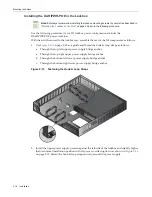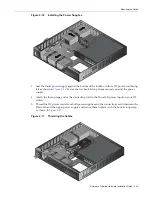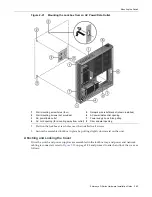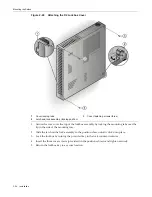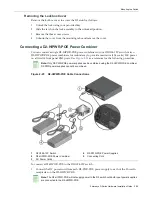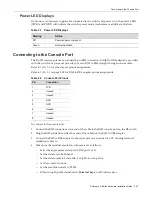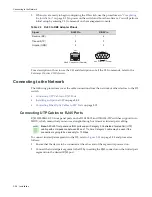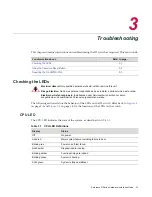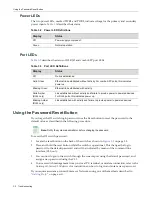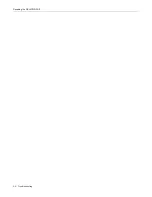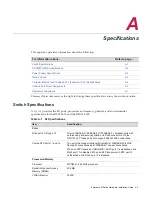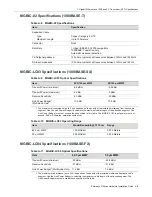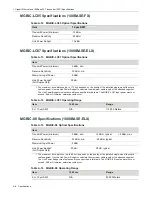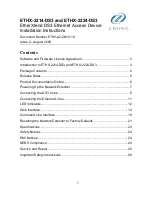
Connecting to the Network
2-32 Installation
If
storing
or
shipping
an
SFP
which
has
a
fiber
‐
optic
connector,
insert
its
protective
dust
cover
to
protect
the
ends
of
the
fiber
‐
optic
fibers
from
dust
or
contamination.
Connecting Fiber-Optic Cables to SFP Ports
Before
connecting
cables
to
SFP
ports,
you
must
install
the
appropriate
transceiver
as
described
in
Installing
an
Optional
SFP
on
page 2
‐
29.
This
section
describes
how
to
connect
a
1
‐
Gigabit
fiber
‐
optic
segment
from
the
network
or
other
devices
to
an
MT
‐
RJ
or
LC
port
connector.
Each
fiber
‐
optic
link
consists
of
two
fiber
‐
optic
strands
within
the
cable
for
Transmit
(TX)
and
Receive
(RX).
The
transmit
strand
from
a
device
port
connects
to
the
receive
port
of
a
fiber
‐
optic
1
‐
Gigabit
Ethernet
device
at
the
other
end
of
the
segment.
The
receive
strand
of
the
applicable
LC
or
MT
‐
RJ
port
connects
to
the
transmit
port
of
the
fiber
‐
optic
1
‐
Gigabit
Ethernet
device.
Refer
to
Figure 2
‐
26
on
page 2
‐
33
as
you
perform
the
following
procedure.
To
connect
an
LC
or
MT
‐
RJ
cable
connector
to
an
SFP
port
connector:
1.
Remove
the
protective
covers
(not
shown)
from
the
uplink
port
SFP
and
from
the
connectors
on
each
end
of
the
cable.
2.
Insert
the
cable
connector
into
the
SFP
connector
until
it
clicks
into
place.
Caution:
Do not touch the ends of the fiber-optic strands, and do not let the ends come in contact
with dust, dirt, or other contaminants. Contamination of cable ends causes problems in data
transmissions. If the ends of the fiber-optic strands become contaminated, use a canned duster to
blow the surfaces clean. A fiber-port cleaning swab saturated with optical-grade isopropyl alcohol
may also be used to clean the ends.
Precaución:
No toque los extremos de los cables de fibra óptica y evite su contacto con el polvo,
la suciedad o con cualquier otro contaminante. Si los extremos de los cables se ensucian, es
posible que la transmisión de datos se vea afectada. Si nota que losextremos de los cables de
fibra óptica se ensucian, utilice aire comprimido paralimpiarlos. También puede limpiarlos con un
estropajo embebido en alcohol isopropílico.
Note:
Leave the protective covers in place when the connectors are not in use to prevent
contamination.
Summary of Contents for D2G124-12
Page 2: ......
Page 12: ...x ...
Page 16: ...xiv ...
Page 20: ...Getting Help xviii About This Guide ...
Page 26: ...PoE Power over Ethernet Support 1 6 Introduction ...
Page 66: ...Resetting the D2 HIPWR POE 3 4 Troubleshooting ...
Page 74: ...Regulatory Compliance A 8 Specifications ...
Page 76: ...Index 2 ...

